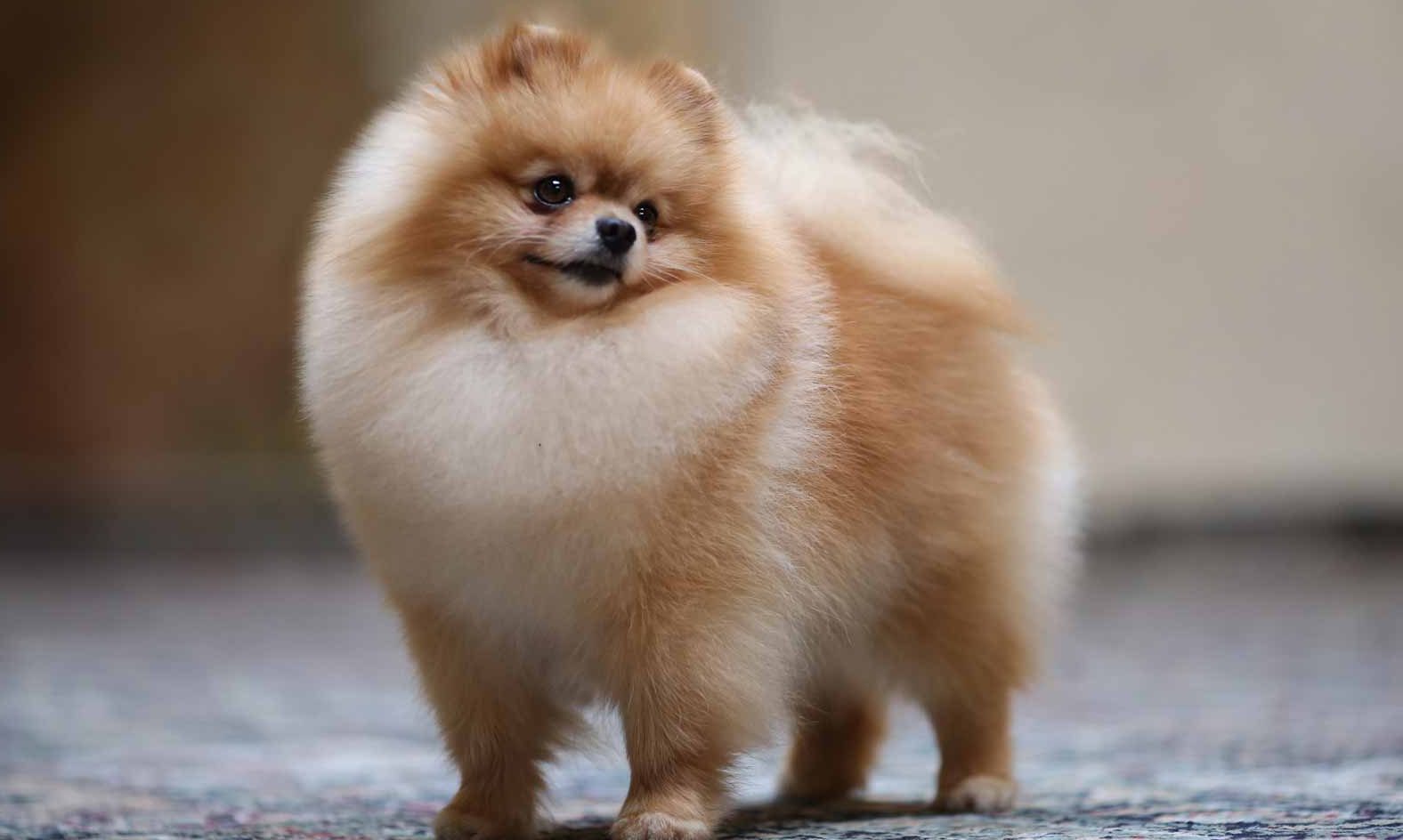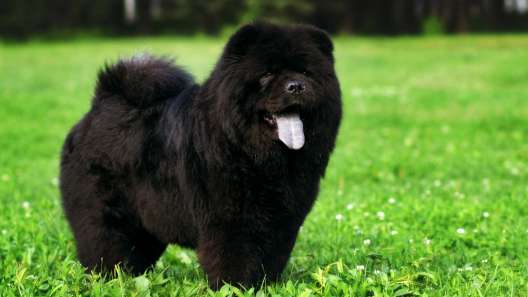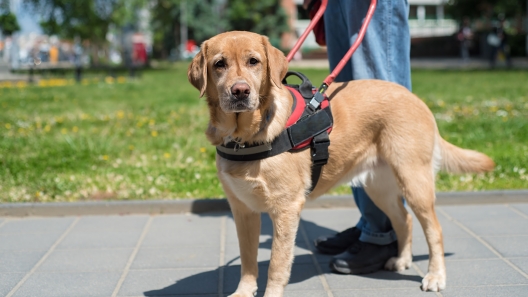-
Activity Level:
moderate
-
Shedding Level:
moderate
-
Grooming Level:
high
-
Trainability:
high
-
Good for Novice Owners:
high
-
Adaptability:
high
-
Kid/Pet Friendly:
often
-
Prey Drive:
moderate
-
Watchdog:
very alert
- Average Size: Small
- Average Lifespan: 12-16 years
- Registered?: aca, akc
Pomeranian Dog Breed Information
Overview
Temperament
Adaptability
Health
Owner Experience
Grooming
Activity Level
Size
Life Span
Did You Know?
The Pomeranian is distantly related to the original Arctic sled dogs; they just come in a much smaller package. Poms are one of the smallest dog breeds and are the smallest of the Spitz breeds. Their name traces to a region that was called Pomerania, which is located across modern Poland and western Germany, and is where it is believed the process of downsizing their ancestors began.
They have been a royal favorite throughout history. Pomeranians were recognized by the AKC in 1888 as a member of the Toy Group. In addition to being a popular companion breed, one of the facts about Pomeranians is that they are a globally popular toy breed and are considered one of the most popular toy breeds in the world.
Pomeranians are generally active, friendly, and affectionate towards their family. They tend to have a “big dog in a small body” type of attitude, which makes good socialization and training even more important to keep them from becoming unruly.
Well-socialized Poms tend to do well with children, other dogs, and other pets. Due to their small size, they are generally a better fit for older children who are less likely to injure them with accidental falls or accidental rough play.
Poms love attention. They will enjoy life as lap dogs and family companions, which also makes them great therapy dogs. They are even one of the dog breeds that make good service dogs and have excelled at working as medical alert dogs or as support dogs for owners who are hard of hearing or deaf.
These little dogs are often suspicious of strangers and tend to be vocal and alert watchdogs. However, if left unchecked, this can also cause them to bark constantly. It’s generally a good idea to train your dog to stop barking early on in addition to socializing and training them for a well-rounded and well-behaved Pomeranian.
The Pomeranian is highly adaptable. They are comfortable in apartments as well as larger homes and enjoy city, suburban, or rural settings. Poms also do relatively well in most climates. As one of the fluffiest dog breeds, their thick double coat affords them a little more protection in colder climates.
However, they can be very sensitive to heat. They can become overheated easily in high heat and humidity, so should be kept inside as much as possible. Even as you try to keep your dog cool in the summer, they should be monitored carefully when outside in this type of weather. Because these little dogs crave companionship, they do not like to be left alone for long periods of time.
Bringing a dog home means taking on more responsibilities too and there are big responsibilities that come with owning little dogs. Potential health concerns to be aware of in Pomeranians can include hip dysplasia, elbow dysplasia, hypothyroidism, eye problems, congestive heart failure, epilepsy, and luxating patellas.
Reputable breeders will screen their dogs to avoid passing preventable issues to puppies. Make sure you talk to the breeder about the health and genetic history of both parents. You can also ask about any health tests or clearances that have been done. The National Breed Club recommends a patella evaluation, cardiac exam, and ophthalmologist evaluation.
Pomeranians can also be prone to allergies and their smaller mouths also make them more prone to developing dental problems later in life. This makes good dental care for dogs early and often throughout their life even more important.
Although they can be stubborn at times, Pomeranians are highly intelligent, highly trainable, and a good fit for owners of all experience levels. This also means it’s easy to train them into bad habits as well as good ones. They respond best to firm and consistent training focused on positive rewards and praise throughout their life.
Some good habits and basic commands to include in your training program are walking on a leash, coming when called, preventing jumping on and off high furniture, and stopping barking. House training a Pom can be a challenge, so be prepared to approach it with a lot of patience and focus on consistency.
Crate training along with some house training tips can be a big help. Because they are such small dogs, jumping on or off high furniture can damage their joints or even break bones. Training them early on not to do this and to use ramps or steps instead will help keep them safe.
Poms are also prone to barking. This makes them very alert watchdogs, but can also become a nuisance if not managed. Directing their barking to certain situations and training them to stop barking on command will be a big help. You can also train Pomeranians to compete in some dog sports, like obedience, rally, and agility, to provide extra training, mental stimulation, and an outlet for energy.
Pomeranians are fluff balls with a double coat and they will shed. The undercoat is soft and dense while the overcoat is long, straight, and harsh in texture. A Pom coat needs to be brushed daily to prevent matting or tangling and they need a bath once a month. More bathing may be necessary if your Pomeranian gets into something they shouldn’t or gets dirty. It’s also a good idea to take your Pom in for full professional grooming every 4-6 weeks, especially during seasonal shedding events.
In addition to coat care, you will also need to take care of your Pomeranian’s nails, ears, and teeth. Trimming nails once or twice a month is usually enough to keep them from growing too long and causing issues. Weekly ear checks along with careful cleanings as needed can help prevent ear infections.
Daily tooth brushing, along with cleanings at the vet when needed, will help keep your dog’s teeth healthy and keep tartar buildup under control to reduce the risk of dental problems later in life. This is particularly important with small dog breeds as they are more prone to tooth decay, gum disease, and early tooth loss.
Getting your Pomeranian used to having their paws handled and teeth brushed as a puppy will make grooming them throughout their life a much easier process. If you reward and praise them to make it a positive experience, grooming can even become a bonding time that is more enjoyable for you both.
Although they can sometimes be viewed as hyperactive and will be energetic when they play, Pomeranians have a lower to moderate activity level and don’t need that much exercise to be happy. They may have bursts of activity, but only need a little exercise each day to stay happy and healthy.
Daily walks plus some playtime will be plenty for your Pomeranians. They love spending time with you though so they will likely be up for more activity if you are. Just keep an eye on them to make sure they aren’t overexerting themselves trying to keep up and be ready to carry them for a bit if they need a break.
Also, Poms can be escape artists when they are outside. Even if you have things in place to keep your dog from escaping the yard, make sure you keep an eye on them if they are outside with you. They can also be at risk from large predatory birds and other predatory animals, including dog-napping humans! It’s important that your Pomeranian is never left alone when they are outside.
A fully-grown Pomeranian usually stands 6-7 inches tall and weighs 3-7 pounds.
Pomeranians generally live for 12-16 years on average.
Queen Victoria is credited with kicking off the Pom’s rise to global popularity. The Dowager Queen fell in love with the breed while on a visit to Florence, Italy, came home with a few Poms, and became a serious breeder and exhibitor of them. In addition to Queen Victoria, Emile Zola, Marie Antoinette, and Wolfgang Amadeus Mozart also owned Pomeranians.









